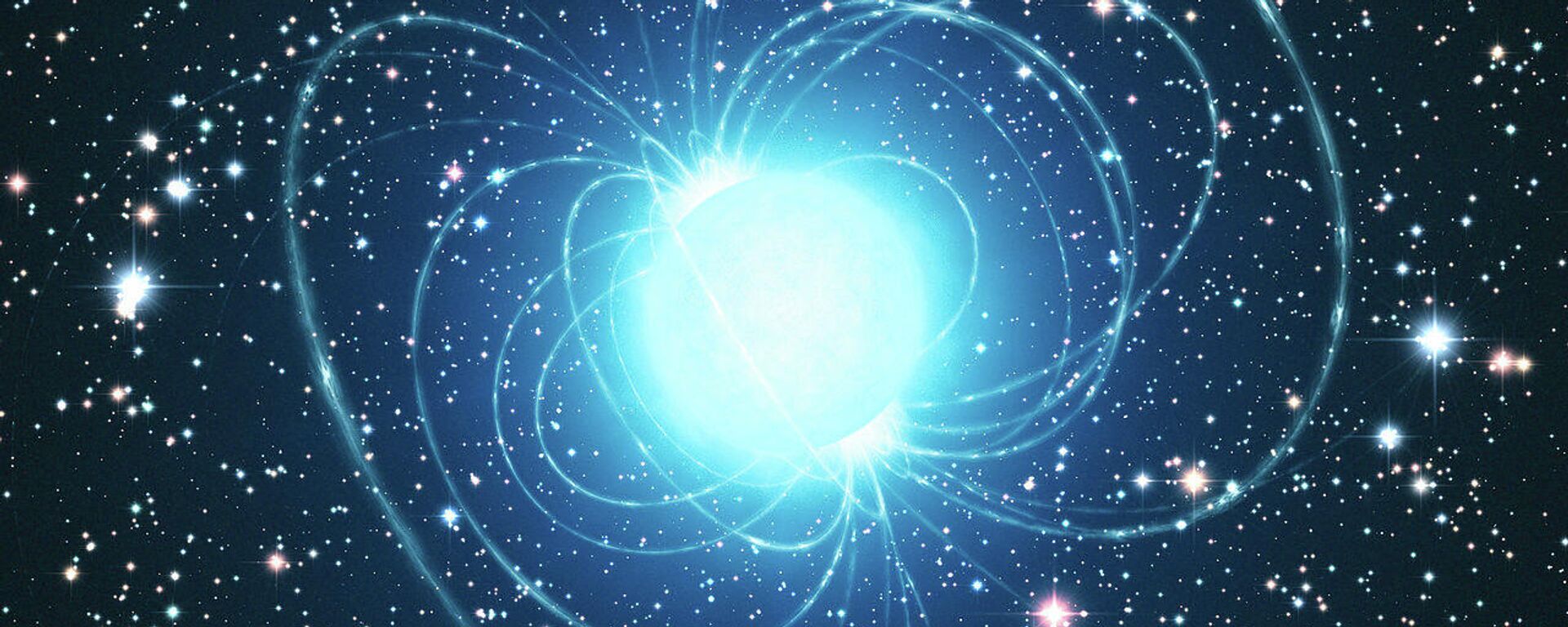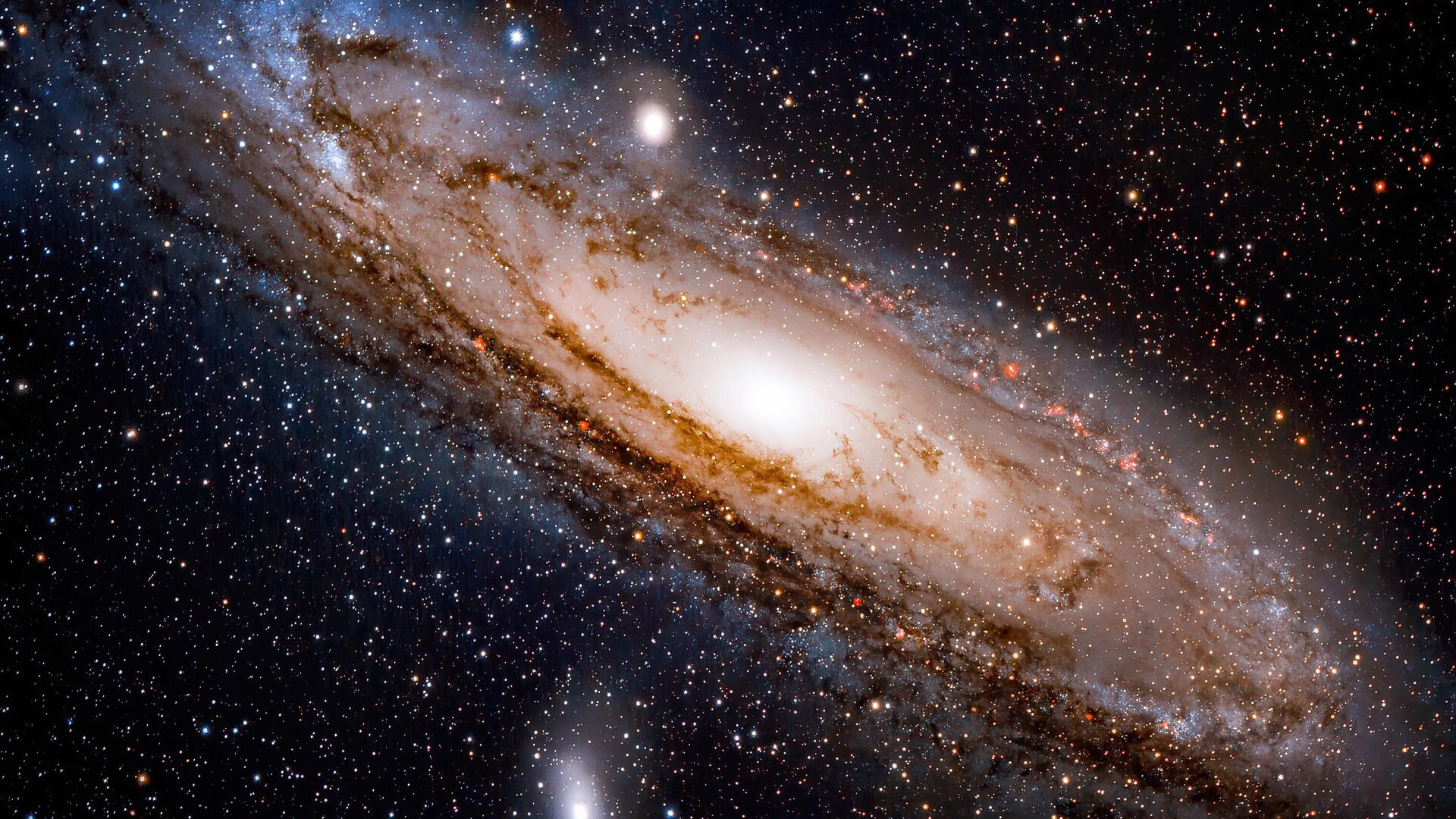https://sputnikglobe.com/20230906/astronomers-make-furthest-ever-measurement-of-galaxys-magnetic-field-1113161409.html
Astronomers Make Furthest-Ever Measurement of Galaxy’s Magnetic Field
Astronomers Make Furthest-Ever Measurement of Galaxy’s Magnetic Field
Sputnik International
By studying the early universe, astronomers hope to unlock new secrets about how and why structures like stars, galaxies, and black holes formed in the wake of the Big Bang, and the forces of physics that made them possible.
2023-09-06T21:20+0000
2023-09-06T21:20+0000
2023-09-06T21:18+0000
beyond politics
atacama large millimeter/submillimeter array (alma)
european southern observatory
galaxy
magnetic field
https://cdn1.img.sputnikglobe.com/img/07e7/05/04/1110085985_0:171:3032:1877_1920x0_80_0_0_b678ddd0bcd6e6f025615be85a37ff84.jpg
A team of astronomers led by James Geach, a professor of astrophysics at the University of Hertfordshire in the United Kingdom, have discovered a fully formed magnetic field in a galaxy some 11 billion light-years away. Their results were obtained using the Atacama Large Millimeter/submillimeter Array in the northern Chilean desert and were published in the journal Nature on Wednesday.The galaxy is called ASW0009io9 and the light detected by the human astronomers departed when the universe was just 2.5 billion years old. It’s also an extremely small galaxy at just 16,000 light-years across - by comparison, the Milky Way is 105,700 light-years across.The field was measured at just 500 microGauss, or about 1,000 times weaker than the Milky Way’s magnetic field, and the astronomers don’t know why.Co-author and ESO astronomer Rob Ivison said the discovery opens up "a new window onto the inner workings of galaxies, because the magnetic fields are linked to the material that is forming new stars."The scientists made their observation in a cunning way: they looked for polarized light emitted by magnetic elements like iron in interstellar dust. Being inside the galaxy’s magnetic field, they would have become aligned with that field.Astronomers have become keenly interested in the early universe, looking further and further back in time - which in space means further away, since nothing travels faster than light. More powerful telescopes, such as the James Webb Space Telescope, have afforded unparalleled views as far back as 500 million years before the Big Bang, when the first stars, galaxies, and black holes were forming.
https://sputnikglobe.com/20230817/astronomers-spot-large-helium-star-likely-to-become-mysterious-magnetar-1112691416.html
Sputnik International
feedback@sputniknews.com
+74956456601
MIA „Rossiya Segodnya“
2023
News
en_EN
Sputnik International
feedback@sputniknews.com
+74956456601
MIA „Rossiya Segodnya“
Sputnik International
feedback@sputniknews.com
+74956456601
MIA „Rossiya Segodnya“
early universe; magnetic field; european southern observatory; astronomy; galaxy
early universe; magnetic field; european southern observatory; astronomy; galaxy
Astronomers Make Furthest-Ever Measurement of Galaxy’s Magnetic Field
By studying the early universe, astronomers hope to unlock new secrets about how and why structures like stars, galaxies, and black holes formed in the wake of the Big Bang, and the fundamental forces of physics that made them possible.
A team of astronomers led by James Geach, a professor of astrophysics at the University of Hertfordshire in the United Kingdom, have discovered a fully formed magnetic field in a galaxy some 11 billion light-years away.
Their results were obtained using the Atacama Large Millimeter/submillimeter Array in the northern Chilean desert and were
published in the journal Nature on Wednesday.
“Magnetic fields are fundamental to the evolution of galaxies, playing a key role in the astrophysics of the interstellar medium and star formation,” the scientists wrote in their paper. “Large-scale ordered magnetic fields have been mapped in the Milky Way and nearby galaxies, but it is not known how early in the Universe such structures formed.”
The galaxy is called ASW0009io9 and the light detected by the human astronomers departed when the universe was just 2.5 billion years old. It’s also an extremely small galaxy at just 16,000 light-years across - by comparison, the Milky Way is 105,700 light-years across.

17 August 2023, 21:12 GMT
The field was measured at just 500 microGauss, or about 1,000 times weaker than the Milky Way’s magnetic field, and the astronomers don’t know why.
"We actually know very little about how these fields form, despite their being quite fundamental to how galaxies evolve," Enrique Lopez Rodriguez, a researcher at Stanford University in the US who was part of the study, said in a news release from the European Southern Observatory (ESO), which is a partner of ALMA.
Co-author and ESO astronomer Rob Ivison said the discovery opens up "a new window onto the inner workings of galaxies, because the magnetic fields are linked to the material that is forming new stars."
Of course, the Milky Way’s magnetic field is pretty weak as well, even when compared to a small planet like Earth, which has a strength of between 25 and 65 Gauss. Galactic magnetic fields are much weaker because they’re spread across huge distances.
The scientists made their observation in a cunning way: they looked for polarized light emitted by magnetic elements like iron in interstellar dust. Being inside the galaxy’s magnetic field, they would have become aligned with that field.
Astronomers have become keenly interested in
the early universe, looking further and further back in time - which in space means further away, since nothing travels faster than light. More powerful telescopes, such as the James Webb Space Telescope, have afforded unparalleled views as far back as
500 million years before the Big Bang, when the first stars, galaxies, and black holes were forming.



